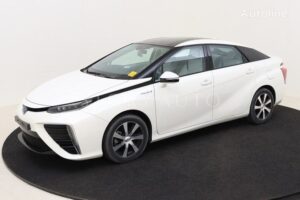 The Toyota Mirai is a hydrogen fuel cell vehicle that was first introduced to the market in 2014. It is a groundbreaking car that has the potential to revolutionize the way we think about transportation, particularly in terms of reducing greenhouse gas emissions. In this article, we will explore the technology behind the Toyota Mirai and how it works to provide a sustainable and efficient mode of transportation.
The Toyota Mirai is a hydrogen fuel cell vehicle that was first introduced to the market in 2014. It is a groundbreaking car that has the potential to revolutionize the way we think about transportation, particularly in terms of reducing greenhouse gas emissions. In this article, we will explore the technology behind the Toyota Mirai and how it works to provide a sustainable and efficient mode of transportation.
The Mirai’s powertrain is based on hydrogen fuel cell technology. It is powered by an electric motor that runs on electricity generated by a fuel cell stack, which combines hydrogen with oxygen from the air to produce electricity, heat, and water. This process, called electrochemical conversion, is the key to the Mirai’s efficiency and environmental friendliness.
One of the advantages of hydrogen fuel cell technology is that it produces zero emissions. The only byproduct of the electrochemical conversion process is water, which is released from the tailpipe as steam. This makes the Mirai an ideal choice for drivers who are concerned about reducing their carbon footprint and preserving the environment.
In addition to being emissions-free, the Toyota Mirai also offers several other benefits over traditional gasoline-powered vehicles. For one, it is much more efficient, with an estimated fuel economy of 67 miles per gallon equivalent (MPGe). This means that the Mirai can travel up to 312 miles on a single tank of hydrogen, which takes only about five minutes to refuel.
Another advantage of the Mirai’s fuel cell technology is its power output. The Mirai’s electric motor is capable of producing up to 153 horsepower and 247 lb-ft of torque, which gives the car a top speed of 111 mph. This makes it a practical choice for daily driving and longer trips alike.
Of course, there are also some challenges associated with hydrogen fuel cell technology, such as the availability of hydrogen refueling stations. However, as more car manufacturers invest in this technology and more stations are built, this is expected to become less of an issue over time.